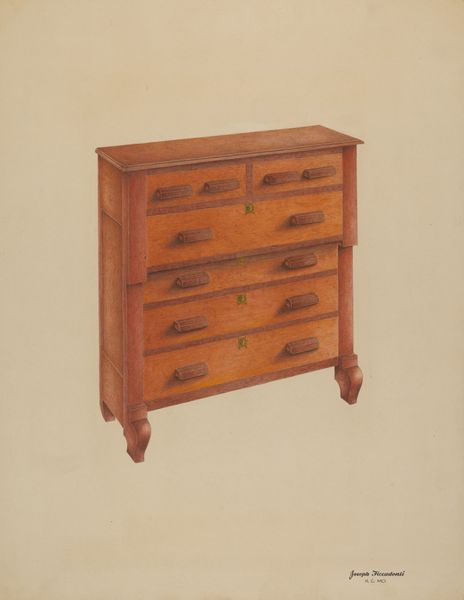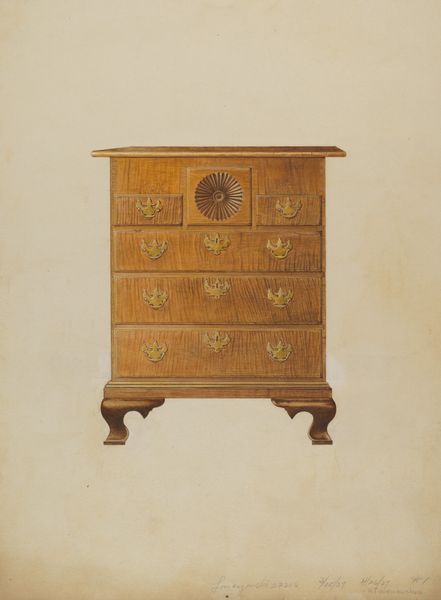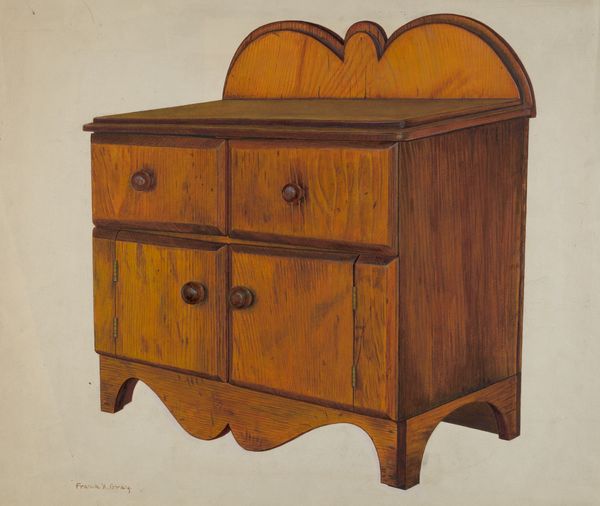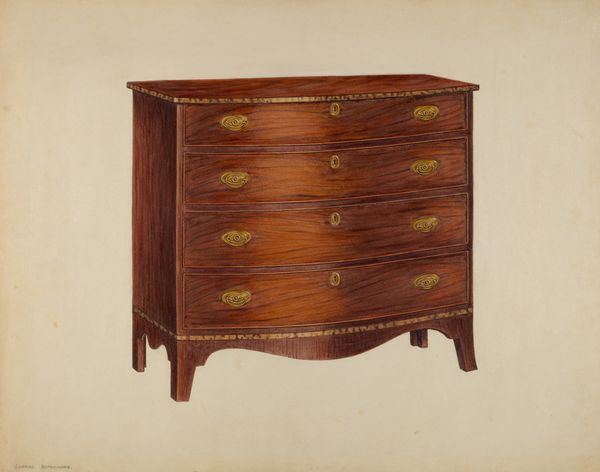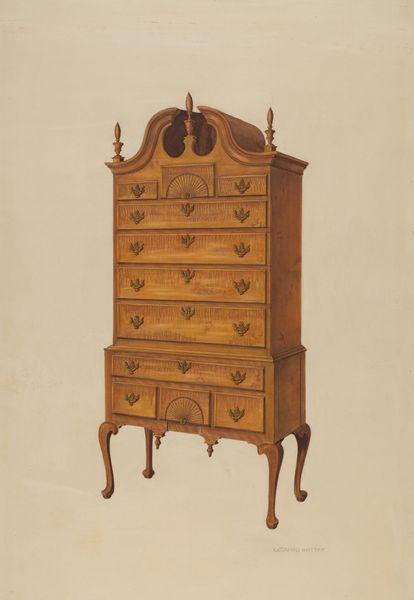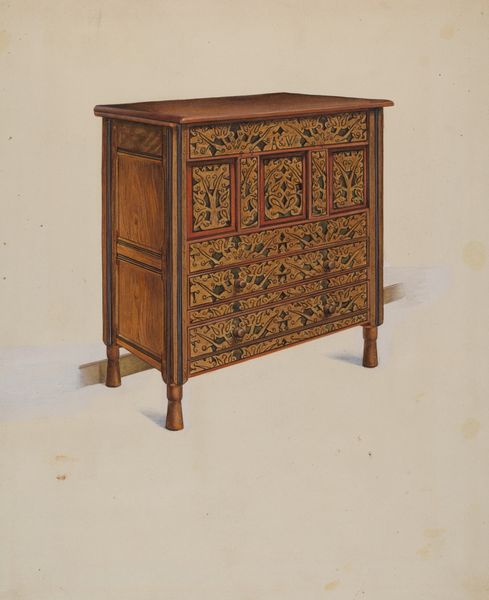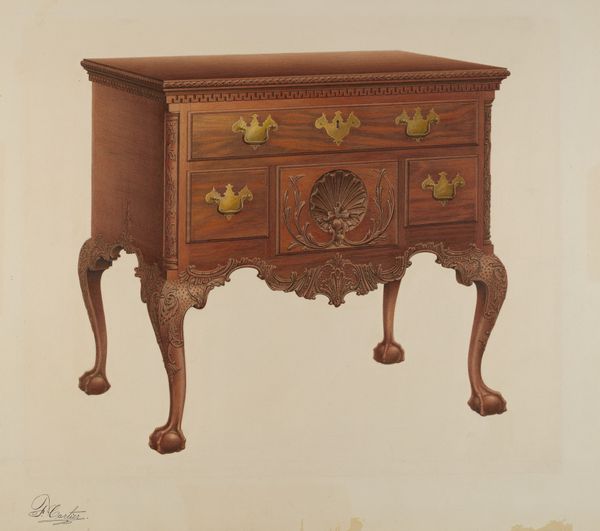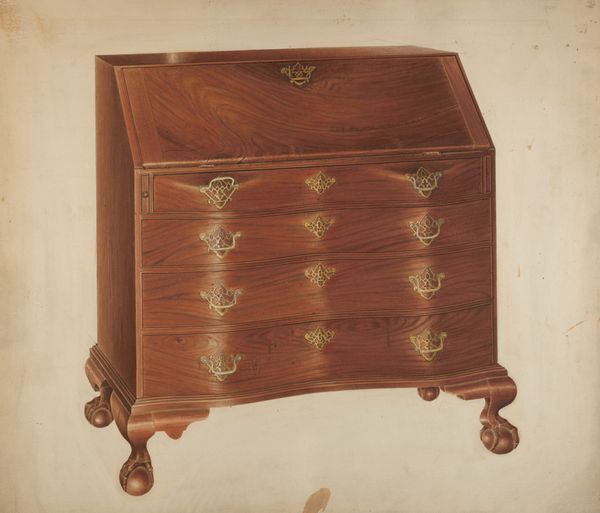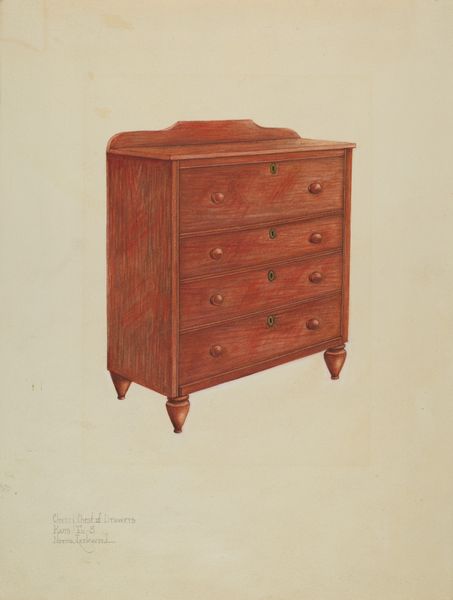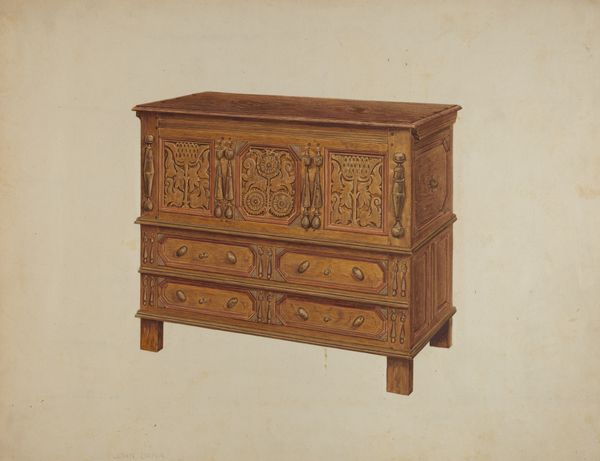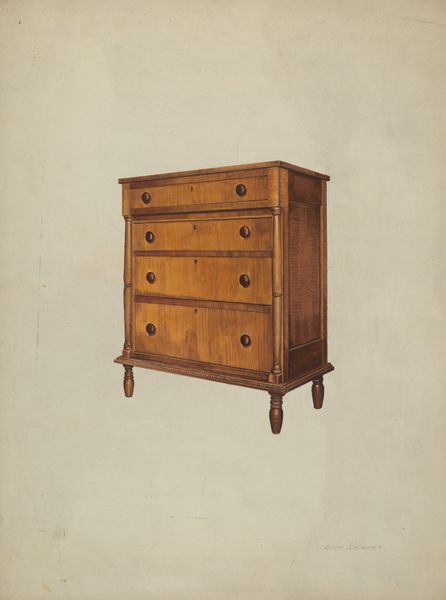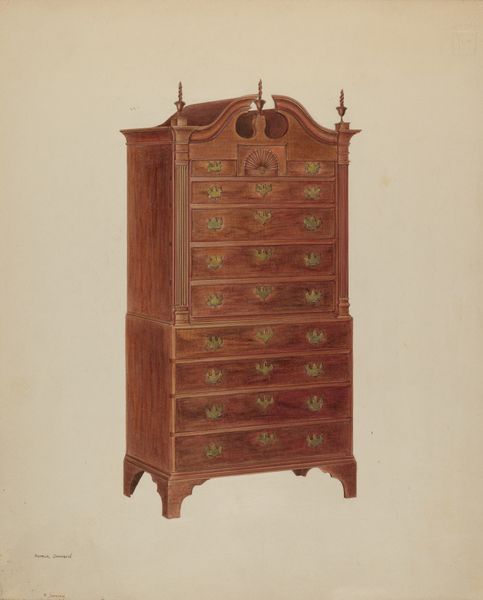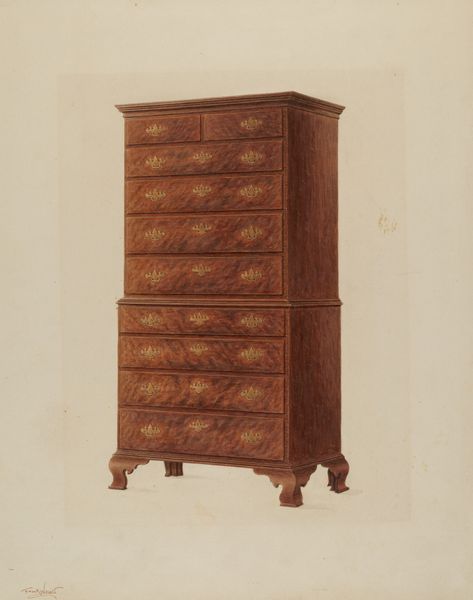
drawing, wood
#
drawing
#
toned paper
#
oil painting
#
wood
#
academic-art
#
realism
Dimensions: overall: 40.1 x 53.8 cm (15 13/16 x 21 3/16 in.) Original IAD Object: 34 1/4"high; 37 1/4"wide, top; 20 13/16"deep.
Copyright: National Gallery of Art: CC0 1.0
Curator: This artwork by Ferdinand Cartier, created around 1939, depicts a "Chest of Drawers". I find it quite striking. What catches your eye initially? Editor: The smoothness! It's funny, it’s a drawing, probably with some kind of oil paint mixed in given the label, and yet the wood looks like it’s been buffed for a century. It’s stately. Almost… smug? Curator: Smug, interesting! I think that sense comes from the self-conscious display of craftsmanship. The academic approach makes it almost a promotional image, highlighting artisanal skill during a time of mass production. The meticulous detail—every curve, every grain—suggests a longing for older traditions. Editor: Right, like a "Look what we CAN do!" yell into the void of industrialization. But it's also incredibly controlled, isn’t it? Like it's showing a platonic ideal of a chest of drawers, not one you'd actually put socks in. Does that academic style strip it of some kind of… soul? Curator: The realism feels like both a strength and constraint. While it gives a detailed view into furniture design of the period, the overt focus on accuracy might overshadow any emotional or conceptual depth. Perhaps Cartier’s intent was purely documentation rather than expression? Editor: Hmm. Maybe. But doesn't even documentation have its own bias, its own voice? The choice to depict this specific style, at this specific moment… it speaks volumes about values, doesn't it? About the perceived elegance and solidity of a disappearing world. It’s less about drawers and more about nostalgia, right? Curator: Yes, the politics of imagery. Exactly that! By capturing this particular aesthetic, the image becomes a political act, advocating for the preservation of these ideals, or at least lamenting their loss in the face of new, often less ornamented, designs that defined modern production in that period. Editor: So, a simple chest of drawers turns out to be a loaded piece, eh? All that perceived smugness might just be sadness in disguise. Curator: Indeed. What seemed like a straightforward representation becomes a poignant commentary on the shifting cultural landscape.
Comments
No comments
Be the first to comment and join the conversation on the ultimate creative platform.
